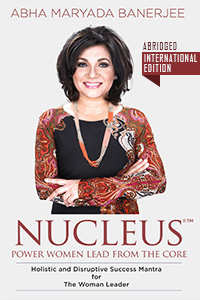Why “Pay-What-Feels-Right” ?

In my personal experience, there are books I bought that ended up not meaning much to me, while others that have been deeply meaningful, even transformative.
Paying the same price has often felt a bit odd. Somehow, it would have felt right to pay less than the list price in some cases, and more in others. That’s why with the e-version of this book, I came up with the idea of offering the possibility of paying what feels right.
This concept is very much in line with a trend called the Gift Economy. It makes for more meaningful relationships, even with people we don’t meet, like an author. Paying a fixed price is rather transactional. It doesn’t honor the personal exchange that somehow happens between us, an author and a reader. “
Pay-What-Feels-Right” invites us to pause and reflect on the value we bring to one another, even at a distance through a book. I feel it brings some soul back into what is otherwise simply a business transaction.
Tips if you wonder what to give
For some of us, the freedom to give comes with just a bit of anxiety: what if I give too little, or too much?
If this is the case for you, I’ve put down two tips you might find helpful. I share this in a playful spirit. There is no “right” or “wrong” amount, so take this lightly, relax, and have fun. 🙂
Tip 1: Listen to your heart (not the “shoulds”)
Here is a practice that I find helpful: the right amount is the one where I feel I’ve let my heart speak, rather than some voice of what I should be doing (anxiety often brings out the “shoulds” for me). Let me illustrate:
- If the book wasn’t what you were expecting, and you put it down after a few pages, you haven’t received much value. Don’t let a voice tell you that you should give something. Giving say $5 or even just $2 might not feel right if it comes from a feeling of obligation, if it leaves you with a just a bit of a bad taste because you’ve given when you didn’t want to give.
- If on the other hand, you’ve found the book has been interesting, important, or even inspirational, follow your heart’s generosity. There might be a voice saying it’s unreasonable to give much more than the $10 to $15 that a book usually costs. But perhaps the book has been worth much more to you. I’ve found that settling for less than my heart’s generosity also leaves me with a bit of a bad taste.
The right amount (I believe) is the one where you feel at peace with yourself, happy that you’ve let only your heart speak, unencumbered with what you should be doing.
Tip 2: A game!
How about if your body gave you the answer to the question, “What’s the amount where I feel I have given neither too little, nor too much?”
Perhaps you are familiar with constellation work and the wisdom from our body and emotions it helps us access. If you feel in a playful mood, you can try this:
- Take a number of pieces of paper on which you write different amounts (say $0, $2, $5, 10$, $20, $50, $100)
- Line them up along an imaginary line on the floor.
- Then go and stand in different places along that line. At every place, take a moment to stand still; try to listen to your body and your emotions.
- In some places, you might sense that your body is tense or contracted, which might mean the amount at the place on the line where you’re standing is too much or too little. Try a different place that represents a different amount.
- At some point, you might feel you’ve hit the right spot, say if you feel open and relaxed. That spot probably indicates the amount that feels right for you.
If this all sounds complicated…
… and you wonder why you didn’t just pay the fixed price 🙂 just go with the first number that pops up in your head. 🙂
And last but not least, if you want to know more about the whole « gift economy » concept, I very much recommend Charles Eisenstein’s book, Sacred Economics.










